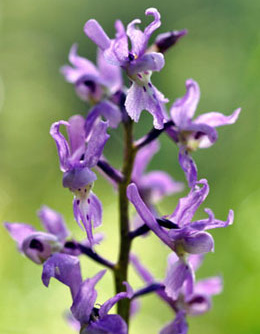An floriculture enthusiast knows that orchids can be difficult to grow, and require special considerations. However, the amateurs are always left wondering how to take care of orchids. This article will help your attempt to learn about the same.

The orchid derives its name from the genus
Orchis, and is the largest member of all flowering plants. Currently, the documented strength of its varieties stands at 880 genera, 28,000 species, and over 300,000 registered cultivators, not to mention the ones we have no knowledge about. These flowers are found in abundance in grassy plains, rainforests, deserts, tundra region, and swampy places. The diversity is such that certain species found once, have never been seen or recovered again.
A single orchid pod contains thousands of seeds, that get scattered by the wind for pollination. Lacking an endosperm to germinate, they enter into a symbiotic relationship with a specific fungus that sustains them with water and minerals to help grow. This is why, of the thousand seeds that get released, only a couple germinate. Some species propagate by sprouting plantlets from their nodes along the stem. Primarily, orchids are classified under two growth types: monopodial and sympodial.
Taking Care of Orchid Plants
Choice of Orchid
Choosing an orchid from such a wide variety is definitely a daunting task, especially for a beginner. Experts recommend that one should pick one from a reputable vendor. Not only will the quality be ensured, you will also be able to gather some excellent tips about their growth habits and requirements. Pick one whose leaves are a healthy green, not yellow, red, or brown, and one which is devoid of spots or blemishes. It should have some blooms, unopened buds. The roots should be firm, thick, fleshy, and well-potted.
Potting Media
Soil quality would need to be maintained at the same level for indoor planting. Most orchids do not grow in soils as other plants do. Naturally, they attach themselves to other plants, trees, and rocks, as their roots need aeration. Soil will suffocate their roots. Most garden centers have orchid-specific potting medium which is made up of fern, coconut husk, tree bark, cork chips, and/or charcoal.
Water
Water is essential to orchids, as its leaves and roots are quite succulent. Chlorinated water is not the best for orchids, but collecting fresh rainwater is also not a probability for everyone. To work around this problem, fill in some tap water, and let it stand for some time. The water you use should be at room temperature. The frequency of watering depends upon the potting medium and the climate. Water drainage is essential, as stagnating water will rot the roots. Water early in the day for it to dampen, and drain out of the potting medium. If you find water getting held between the leaves, use some cotton swabs to absorb it. Water between the leaves invites pests and insects to breed.
Light
How well the orchid blooms, depends upon the light it receives. Some prefer high intensity light while some don't. Check this with the vendor while asking him about taking care of the plants. Indoors, a windowsill is the best place to grow an orchid. The leaves are the best indicators to understand light needs. When they start turning yellow or red, it's receiving too much light, and hence, needs to be moved to a more shady area. When the green color of the leaves gets unusually dark, it indicates a lack of light. Too much light may kill your orchid, but too little light won't. However, light deficiency will not allow it to bloom either.
Humidity and Temperature
Maintain humidity levels of around 60% for optimum growth. Regularly spray-mist the orchid, or place it in a water tray full of gravel or sand. Evaporating water will increase humidity levels. Humidity should not exceed the mark of 80%, as this will allow fungal infections to infest the plant. As orchids are subtropical in nature, temperature needs to be maintained higher than that required by those found in cooler climates.
Fertilizer
Fertilize your orchid with a combination of nitrogen, phosphorous, and potassium. Nitrogen is for the foliage, while potassium and phosphorous are for good flowers. An application of liquid fertilizer, before its growing month, is considered best. Feed the plant with a very weak solution of liquid fertilizer once a week, after you have watered the plant.
The American Orchid Society has a complete list of pests and insects that can infect your orchid, and the ways to tackle them. Wiping leaves with a warm, soapy sponge will clean out most infestations, and keep a control on its spread.






 The orchid derives its name from the genus Orchis, and is the largest member of all flowering plants. Currently, the documented strength of its varieties stands at 880 genera, 28,000 species, and over 300,000 registered cultivators, not to mention the ones we have no knowledge about. These flowers are found in abundance in grassy plains, rainforests, deserts, tundra region, and swampy places. The diversity is such that certain species found once, have never been seen or recovered again.
The orchid derives its name from the genus Orchis, and is the largest member of all flowering plants. Currently, the documented strength of its varieties stands at 880 genera, 28,000 species, and over 300,000 registered cultivators, not to mention the ones we have no knowledge about. These flowers are found in abundance in grassy plains, rainforests, deserts, tundra region, and swampy places. The diversity is such that certain species found once, have never been seen or recovered again.